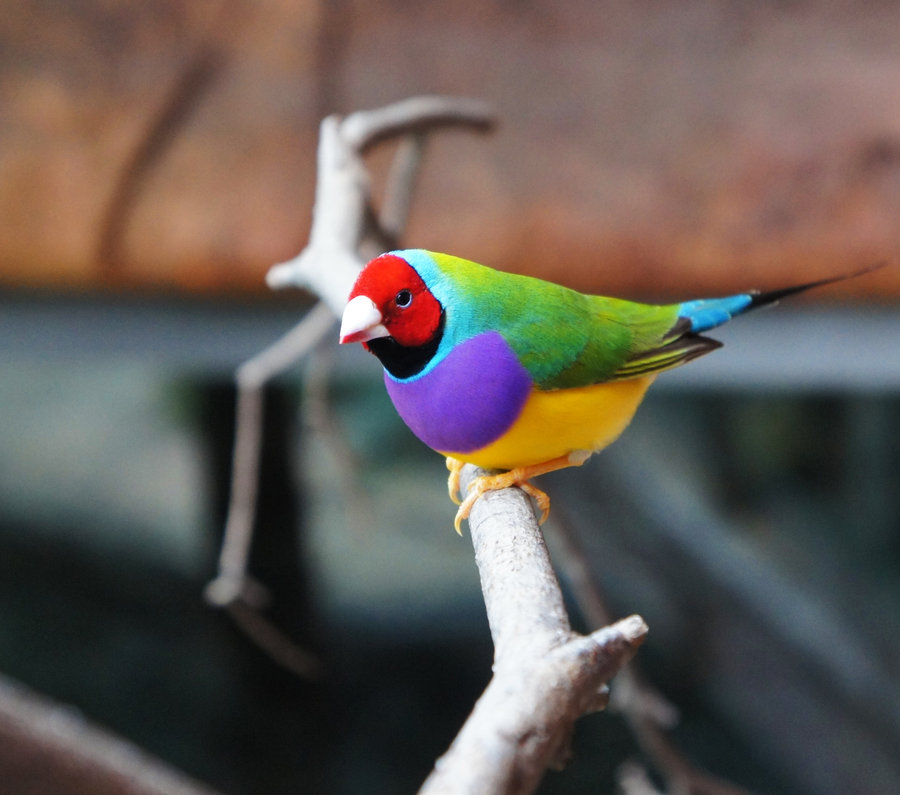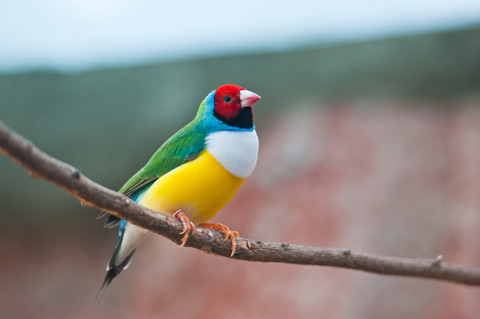
Chloebia gouldiae
SUBFAMILY
Erythrurinae
TAXONOMY
Amadina gouldiae Gould, 1844.
OTHER COMMON NAMES
English: Rainbow finch, painted finch, lady Gould, purplebreasted
finch; French: Diamant de Gould; German: Gouldamadine;
Spanish: Pinzуn de Gould.
PHYSICAL CHARACTERISTICS
4.9–5.5 in (12.5–14 cm). The most brightly colored estrildid,
this species is sexually dimorphic; females have a shorter tail
and a paler breast. Juveniles are a duller, paler version of the
adults. Black-headed, red-headed, and yellow-headed varieties
exist naturally in the wild. The black-headed is the common
morph (75% of the population) while only one in several thousand
is of the yellow-headed variety.
DISTRIBUTION
Fragmented areas in north-central Australia.
HABITAT
Found in dry grassland, plains, areas near water, forest edges,
scrubland, and savanna woodland.
BEHAVIOR
Found in flocks of up to several hundred individuals. This shy
species tends to avoid areas inhabited by humans. The call is a
“sit,” “ssit-ssit,” or a “sree.” The song is a very soft, almost inaudible
series of whispers, hisses, whinings, and clicks.
FEEDING ECOLOGY AND DIET
Feeds among grasses on a variety of seeds, especially those of
sorghum, and on diverse insects and spiders, especially during
the breeding season. Drinks in a pigeon-like manner.
REPRODUCTIVE BIOLOGY
Breeds from November to April during which it builds a globular
nest without an entrance tube and sometimes without a
roof. Occasionally this species will also use holes in trees or
termite mounds as a nesting site. Four to seven white eggs are
incubated for 14–15 days.
CONSERVATION STATUS
Endangered. The decrease in numbers is thought to be due to
widespread burning of grasses and increase in grazing within
its native range.
SIGNIFICANCE TO HUMANS
Commonly kept and bred in captivity where young are often
fostered by Bengalese or society finches, a domesticated form
of the white-backed munia (Lonchura striata). In captivity this
species has an unusually high predisposition to the air sac mite
(Sternostoma tracheacolum).
Other popular Animals
Photo Gallery of - Gouldian finch




 Animalia Life
Animalia Life